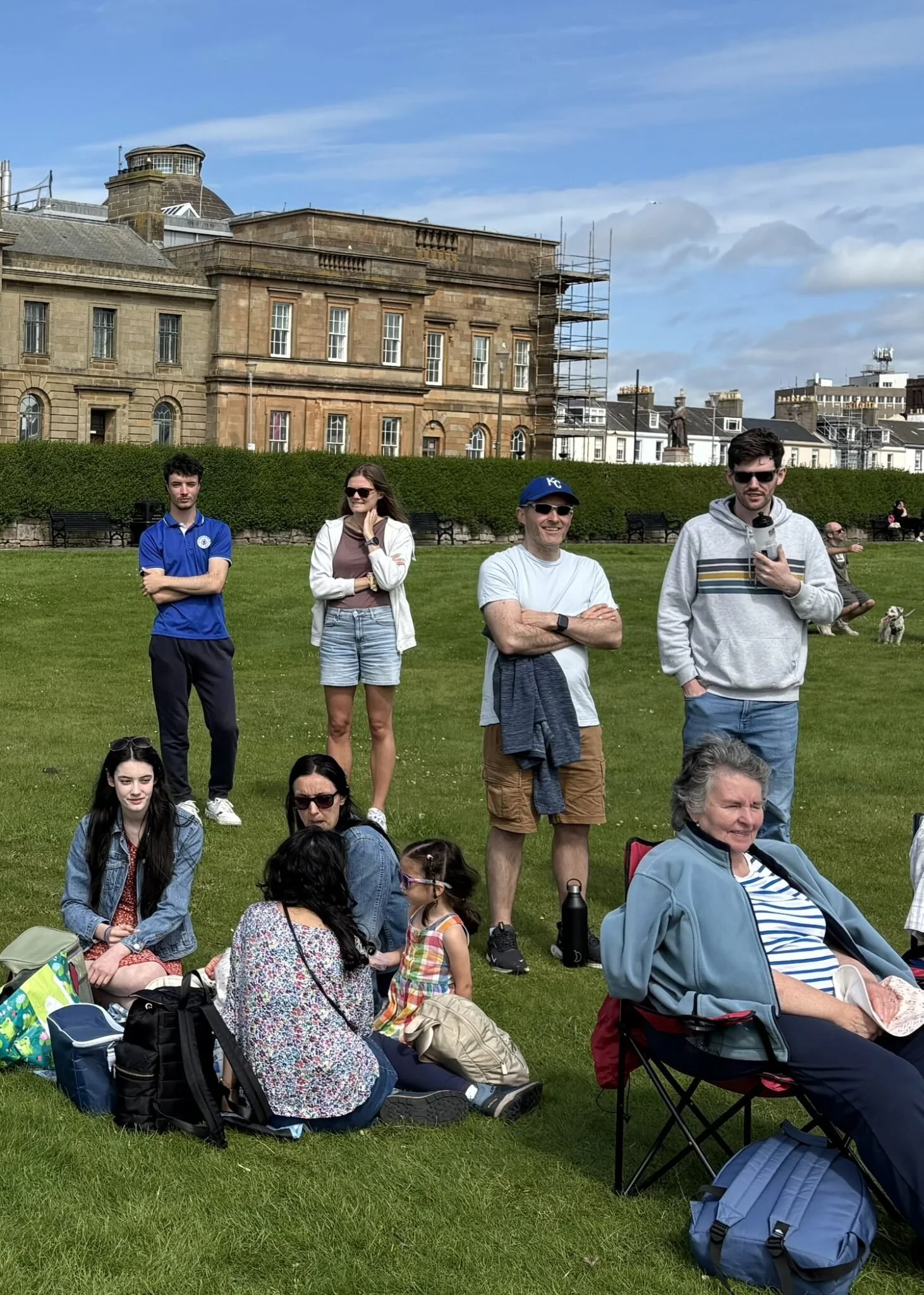Last month, we in Stranraer organised an event for the whole denomination in Ayr. The following report is taken from the RPCS website:
Each year a different church in the Presbytery organises a Presbytery-wide event. This year it was Stranraer’s turn and they planned a lovely day in Ayr on the 2nd August. 55 people from Airdrie, Glasgow, North Edinburgh, Stranraer, and Wishaw attended, and we were blessed with beautiful weather.
The day began with everyone meeting for a picnic lunch on the Ayr Lower Green. After some time chatting and catching up over our sandwiches, it was time for a walk to the old cemetery in Ayr, where Jimmy Fisher (from Airdrie RPC and Tour Guide for our Presbytery ministry, Reformation Tours) gave a talk at the grave of 7 Covenanter martyrs who were all hanged at Ayr. They had been captured at Rullion Green in November 1666, and were part of a group of twelve men brought from Edinburgh to Ayr to stand trial for their part in the Pentland Rising. After the inevitable outcome, all were sentenced to death. Part of the inscription on their grave reads (like so many of the martyr graves in Scotland) that they died “For their adherence to the Word of GOD and Scotland’s Covenanted work of Reformation”. We then sang Psalm 23 and Psalm 133 and James Fraser prayed.
We then walked back to the green where there were all sorts of games and races for young and old alike involving parachutes and hula hoops. Folks continued to chat and spend time getting to know new people from the different congregations and catching up with old friends. It was a lovely day and many thanks to Stranraer RPC for organising it.















